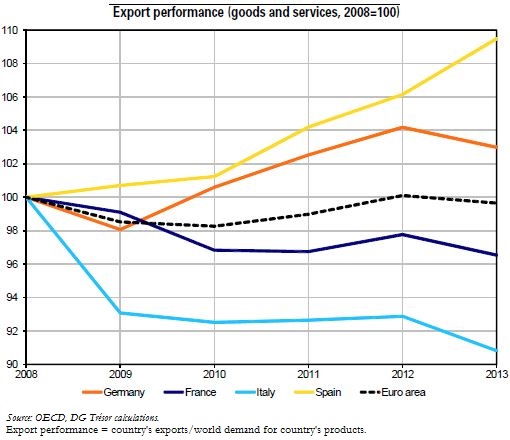Trésor-Economics No. 140 - Why are post-crisis Spanish exports so dynamic?
Spain's export performance has improved sharply since 2009-in other words, its exports of goods and services have been more robust than expected relative to the development of the foreign demand.
This strong performance is due to several factors including the sharp improvement in cost competitiveness, partly made possible by the wage moderation but also by the strong recovery in productivity that accompanied the massive post-crisis job losses (by comparison, exchange rate movements had a negligible effect over the period).
However, the cost competitiveness gains only partly explain Spain's strong post-crisis export performance: (i) Spanish exports were already dynamic before the crisis, despite a sharply deteriorating cost competitiveness; (ii) cost-competitiveness gains are only partly reflected in prices because firms chose to restore their margins; (iii) Spain's hourly labour costs were already lower than those of its main partners before the crisis; (iv) foreign demand remains the main determinant of exports, while competitiveness factors play a minor role.
Spanish firms also seem to have responded to weak domestic demand by turning to foreign markets. The number of exporting firms has risen sharply since the crisis. The share of Spanish exports directed towards the euro area has declined substantially, whereas the share of exports directed towards high growth potential markets has risen. However, this development is partly due to the lack of dynamism of the euro area as compared to other export markets.
In the longer term, however, cost-competitiveness gains should be reduced because of a slower productivity growth and a slow recovery in wages.
Moreover, it is an open question whether the improvement in export performance will last, given the lack of a significant change in specialisation and despite the government's proactive policy. While Spanish firms are gaining market share in dynamic regions, there is, however, no major sector diversification. Spain's production base is also still characterised by a relatively low percentage of exporting firms-a situation that could curtail the internationalisation of the economy.
